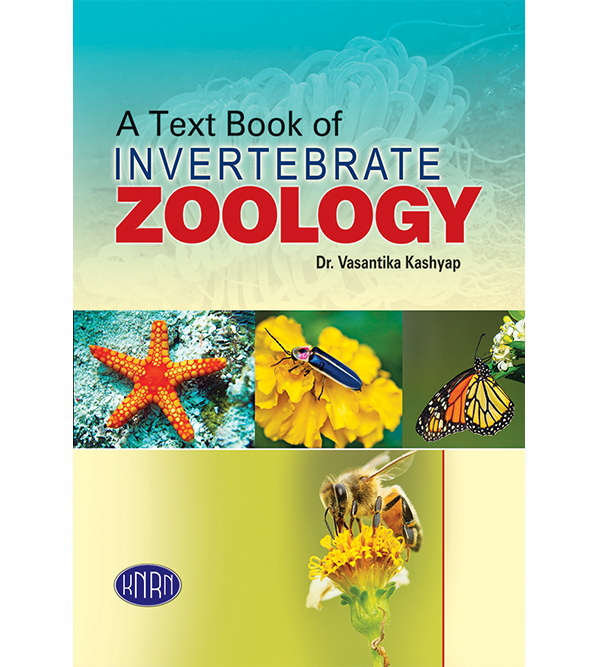Invertebrate Zoology
- Rs.880
- Ex Tax:Rs.880
- Brand: Veer Bala Rastogi
- Product Code:B00009
- Availability:In Stock
LOWER NONCHORDATA: 1. Phylum Protozoa : Characters, Classification and Types; 2. Phylum Porifera : Characters, Classification and Types; 3. Phylum Coelenterata : Characters, Classification and Ty..
Tags: invertebrate zoology
LOWER NONCHORDATA: 1. Phylum Protozoa : Characters, Classification and Types; 2. Phylum Porifera : Characters, Classification and Types; 3. Phylum Coelenterata : Characters, Classification and Types; 4. Phylum Platyhelminthes : Characters, Classification and Types; 5. Phylum Nematoda : Characters, Classification Of types; 6. Euglena; 7. Monocystis; 8. Paramecium; 9. Entamoeba Histolyca; 10. Phylum Protozoa : Locomotion, Nutrition, Reproduction and Economic Importance; 11. Phylum Protozoa : Miscellaneous; 12. Scypha or Sycon; 13. Obelia; 14. Aurelia; 15. Dugesia or Planaria; 16. Fasciola Hepatica; 17. Taenia Solium : The Pork Tapeworm; 18. Helminths : Economic Importance, Parasitic Adaptations, Ancylostoma and Wuchereia; 19. Distinctions
HIGHER NON-CHORDATA: 1. Phylum Annelida; 2. Phylum Arthropoda; 3. Phylum Mollusca; 4. Phylum Echinodermata; 5.Nereis; 6. Leech; 7. Earthworm; 8. Comparative Questions; 9. Peripatus; 10; Palaemon; 11. Scorpion; 12. Class Insecta; 13. Pila; 14. Unio; 15. Miscellaneous; 16. Sepia; 17. Starfish; 18. Distinctions and Differences;
SECTION – A CELL – BIOLOGY: 1. Microscopy; 2. The Cell : Prokaryotic and Eukaryotic Cells; 3. Cell Membrance or Plasma Membrane; 4. Endoplasmic Reticulum; 5. Golgi Complex; 6. Lysosomes 7. Ribosomes; 8. Mitochondria; 9. Centriole; 10. Nucleus; 11. Deoxyribonucleic Acid (Nucleic Acids); 12. Ribonucleic Acids (RNA) 13.Genetic Code; 14. Protein Synthesis; 15. Genetic Control of Protein Synthesis; 16. Cell Division (Mitosis and Meiosis)
MOLECULAR BIOLOGY: 1. Cellular Respiration; 2. Chromosomes; 3. Deoxyribonucleic Acid (Necleic Acids) 4. Ribonucleic Acids (RNA) 5. Genetic Code; 6. Protein Synthesis; 7. Genetic Control of Protein Synthesis;
GENETIC: 1. Mendel's Laws; 2. Linkage and Crossing Over; 3. Modification of Mendelian Ratios of Gene Interaction or Factor Hypothesis; 4. Sex–Determination or Sex–Differentiation; 5. Sex–Linked Inheritance; 6. Gene Mutation & Chromrsomal Aberrations; 7. Inborn (Hereditary) Diseases in Man; 9. Eugenics, Euthenics and Euphenics.
ORGANIC EVALUTION: 1. Origin of Life; 2. Evidences of Organic Evolution; 3. Theories of Evolution : Lamarckism; 4. Darwinism : Theories of Evolution (Contd.); 5. DeVries Mutation Theory and Mutation (Theories of Evolution); 6. Isolation; 7. Evolution in Action; 8. Concept of Species and Speciation or Origin of Species; 9. Population Genetics, Polymorphism and Hardy Weinberg's Law; 10. Micro-Macro and Megaevolution; 11. Pedigree oh Horse; 12. Evolution of Man; 13. Definition and Differentiations.
Palaeontology: 1. Definition and Scope of Palaeontology; 2. Rocks and their Dating; 3. Fossils; 4. Geological Distribution of Animals; 5. Pedigree of Horse; 6. Pedigree or Origin of Man; 7. Distinctions and Short Notes.
Environmental Biology: 1. Introduction and Branches of Ecology; 2. Environment and Environmental Factors; 3. Animal Relationships; 4. Ecosystem; 5. Biosphere and Biomes; 6. Biogeochemical Cycles; 7. Ecosystem: Concept, Homeostasis, Energy Flow, Food Chain, Food Web and Trophic Levels; 8. Ecological Niche and Habitat, Ecotone and Edge Effect and Ecological Equivalents; 9. Community Structure and Species Diversity; 10. Ecological Succession; 11. Aquatic Habitat (Biotic Communities); 12.Estuarine Habitat; 13. Terrestrial Habitat (Biotic Community); 14. Population Ecology; 15. Human Population and its Impact on Ecodegradation; 16. Forests Conservation; 17.Natural Resource and their Utilisation; 18. Biological Clocks; 19. Adaptations.
TOXICOLOGY: 1. Introduction and Scope of Toxicology; 2. Chemical Nature of Toxic Substances; 3. Pollutant of the Atmosphere and Toxicants of Public Health Hazard; 4. Environmental Toxicants and Their Effect; 5. Toxicokinetics; 6. Radioactive Pollution; 7. Dose-Response Relationships; 8. Factors Effecting the Toxicity of Chemical Agents; 9. Biotransformation or Metabolism of Toxicants; 10. Toxic Action; 11. Evalution of Toxicity or Toxicological Testing Methods; 12. Biological Magnification of Toxic Materials or Biomagnification; 13. Exposures, Absorption, Translocations and Bioaccumulations of Chemicals (Xenobiotic); 14. Antidotal Procedures; 15. Biomonitoring of Toxic Chemical; 16. Comparisons, Distinctions and Short Note; 17. Objective Questions.
Biostatistics (Biometry): 1. Biostatistics or Biometry; 2. Sampling Methods or Collection of Data; 3. Classification Data and Frequency Distribution; 4. Presentation of Data (Graphic Representation); 5. Central Tendency : Mean, Medium and Mode, 6. Probability; 7. Measures of Dispersion or Measures of Spread; 8. Correlation and Regression; 9. Analysis of Variance; 10. Test of Significance ('t' Test) and Chi-Square Test Annexures
| Author | |
| Author | Dr. Veer Bala Rastogi |
| Pages | |
| Pages | 1810 |




